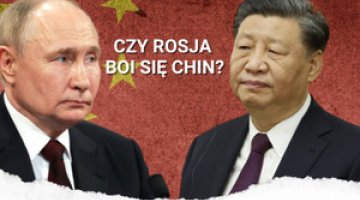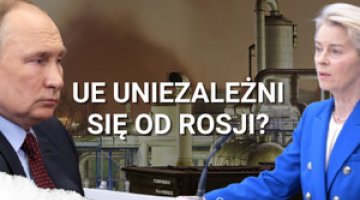Sham dialogue: the Istanbul talks between Ukraine and Russia
On 16 May, the first direct peace talks between Russia and Ukraine since 2022 took place in Istanbul. The Ukrainian delegation, led by Defence Minister Rustem Umerov, included senior military officers, intelligence officials, and representatives from the Ministry of Foreign Affairs and the President’s Office. The Russian side was represented by Vladimir Medinsky (advisor to Vladimir Putin and head of the delegation), Mikhail Galuzin (Deputy Foreign Minister responsible for relations with post-Soviet states), Igor Kostyukov (head of the Main Directorate of the General Staff of the Armed Forces of the Russian Federation – military intelligence), Andrei Fomin (Deputy Minister of Defence), and four lower-ranking officials.
Following approximately two hours of talks, both parties announced plans to conduct a prisoner exchange in the near future in a 1,000-for-1,000 formula, along with a joint declaration of intent to continue negotiations, including on the detailed conditions for a ceasefire. According to the Ukrainian side, the Russian delegation presented unrealistic demands, such as the withdrawal of Ukrainian forces from the non-occupied parts of the Donetsk, Zaporizhzhia and Kherson oblasts.
President Volodymyr Zelensky criticised the low rank and lack of decision-making authority within the Russian delegation, emphasising Ukraine’s willingness to agree to a ceasefire. He also described Vladimir Putin’s absence from the talks in Istanbul as an obstacle to progress and proof of Russia’s lack of intent to end the war. Following the meeting, Umerov stated that the discussions had focused on a ceasefire, humanitarian issues, and the possibility of a future meeting between the leaders of the two countries.
Moscow ‘took note’ of Kyiv’s proposal to hold a Putin–Zelensky summit in the near future but made it conditional on achieving ‘tangible results’ in the ongoing negotiations. It also raised the issue of who on the Ukrainian side would sign a potential peace agreement, referring to previous Russian messaging that questioned President Zelensky’s legitimacy.
In response to Donald Trump’s statements about the need for a direct meeting with Putin to achieve a breakthrough in peace talks, the Kremlin’s spokesperson announced that Russia is ready for such a meeting following ‘appropriate preparation’ – implying that prior agreements on outcomes would be necessary. Both the White House and the Kremlin confirmed a phone call between the two leaders which took place on 19 May. Moscow also reiterated that Russia has all the means necessary to achieve its objectives in the war against Ukraine (according to Putin) and is capable of continuing the conflict for several more years (as stated by Medinsky).
Zelensky’s readiness to meet with Putin and to engage with the Russian delegation – despite its low rank – was intended to demonstrate to the United States that Kyiv, unlike Moscow, is genuinely open to negotiations to end the war. Russia’s intention, in contrast, was to create the appearance that it is seeking a compromise on peace in Ukraine while aiming to prevent the US from imposing new sanctions. Moscow’s resistance to a ceasefire and its insistence on conditions that are unacceptable to Ukraine are designed to derail the talks and discourage Trump from continuing support for Kyiv.
Commentary
- The line-up and statements of the Russian delegation were intended to emphasise that Moscow views the current talks as a continuation of the spring 2022 Istanbul negotiations which it claims were ‘interrupted’ under Western pressure. The delegation was led by Vladimir Medinsky – former Minister of Culture involved in shaping Russia’s imperial memory policy – who also headed the Russian team during the March 2022 talks, which were effectively based on terms which amounted to Ukraine’s capitulation.
- Both the above references and the Kremlin’s statements suggest that Moscow has not retreated from any of the far-reaching conditions for peace it has communicated over the past three years. These include, in particular, recognition of the annexation of Crimea and four additional Ukrainian oblasts, Ukraine’s neutrality, and a ban on its integration with NATO. Russia insists that if peace is to be achieved, this requires addressing the ‘root causes’ of the conflict and that Russia must obtain ‘security guarantees’. In this context, Foreign Minister Sergey Lavrov reiterated the demands for the demilitarisation of Ukraine, its ‘denazification’ (including the banning of organisations labelled as nationalist by Moscow), the restoration of special rights for the Russian-speaking population, and for the Ukrainian Orthodox Church of the Moscow Patriarchate.
- From Russia’s perspective, the outcome of the Istanbul meeting represents a moderate success. Moscow resisted pressure from Kyiv and the West by refusing to agree to the proposed 30-day ceasefire, while the announced continuation of talks helps to minimise the immediate risk of new US sanctions that could further harm its already weakened economy. The Kremlin’s tactical goals remain: the prolongation of negotiations to discourage the Trump administration from continuing its (limited) support for Ukraine, and to maximise the fulfilment of its demands towards Kyiv – primarily through military means, but also via diplomatic channels.
- Kyiv did not expect Vladimir Putin to attend the talks in Istanbul and had no illusions regarding a breakthrough. However, it chose to participate out of concern that Washington might accuse it of obstructing peace negotiations. The move was intended to expose the Kremlin’s lack of goodwill and to prompt stronger, coordinated US–European pressure on Russia, as well as increased support for Ukraine. So far, this strategy has yielded no tangible results. Trump justified Putin’s absence from Istanbul by noting that he himself had not attended either and stressed the need for a direct conversation with the Russian leader. In Kyiv, this has sparked concern over the possibility of an unfavourable deal being made without Ukraine’s involvement.
- By demonstrating its willingness to negotiate, Kyiv has been gradually shifting its ‘red lines’ to align with Trump’s expectations. After unsuccessfully seeking credible security guarantees from the West as a precondition for talks with Russia, Ukraine dropped another key demand in Istanbul – the requirement for a 30-day ceasefire. Moreover, engaging in direct talks with Moscow without the involvement of the United States plays into Russia’s strategy of simulating and prolonging the peace process, while firmly separating it from any parallel dialogue on Russia’s economic cooperation with Washington.





